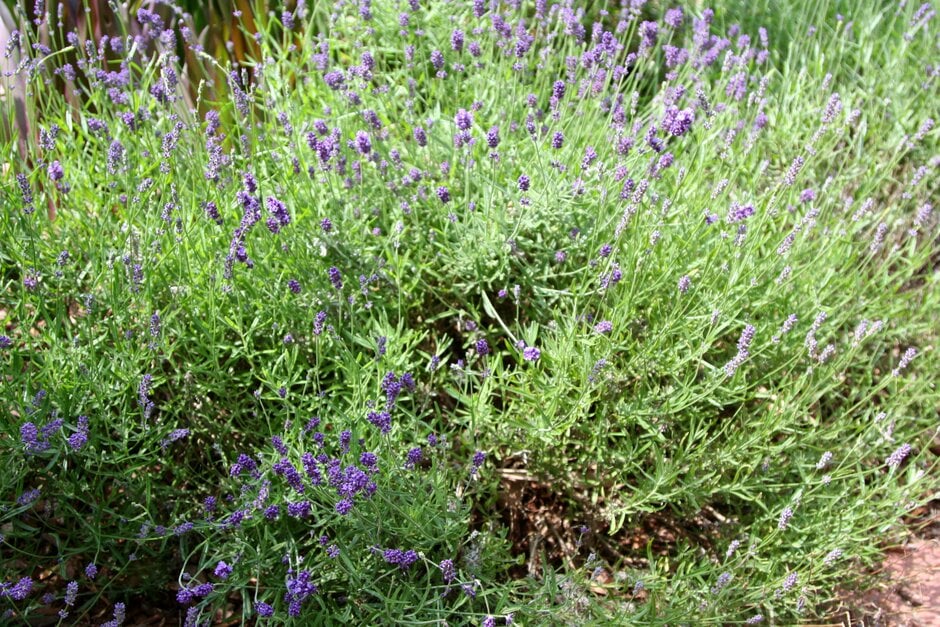Lavandula angustifolia Blue Scent ('Syngablusc')
English lavender [Blue Scent]
A bushy but compact variety with narrow, scented grey to green leaves and slim, upright stems which produce dense, blue flowers in the summer
Size
Ultimate height
0.1–0.5 metresTime to ultimate height
2–5 yearsUltimate spread
0.1–0.5 metresGrowing conditions
Moisture
Well–drainedpH
Acid, Alkaline, NeutralColour & scent
| Stem | Flower | Foliage | Fruit | |
| Spring | Green Grey Silver | |||
|---|---|---|---|---|
| Summer | Blue | Green Grey Silver | ||
| Autumn | Green Grey Silver | |||
| Winter | Green Grey Silver |
Position
- Full sun
Aspect
South–facing or East–facing or West–facing
Exposure
ShelteredDrought resistance
Yes Hardiness
H5Botanical details
- Family
- Lamiaceae
- Native to GB / Ireland
- No
- Foliage
- Evergreen
- Habit
- Bushy
- Genus
Lavandula are small aromatic evergreen shrubs with usually narrow, simple, entire, toothed or lobed leaves and small tubular flowers in dense spikes in summer
- Name status
Trade
How to grow
Cultivation
Grow in well-drained soil in a sheltered, sunny position. See lavender cultivation for further details
Propagation
Propagate by semi-hardwood cuttings. See our video How to take lavender cuttings for more advice
Suggested planting locations and garden types
- Cottage and informal garden
- City and courtyard gardens
- Gravel garden
- Mediterranean climate plants
- Patio and container plants
- Wildlife gardens
- Coastal
- Banks and slopes
- Flower borders and beds
- Garden edging
Pruning
Pruning group 10; deadhead after flowering. Trimming in late summer prevents plants from becoming straggly, but you can leave plants for a season to benefit wildlife with seeds or as shelter if you prefer. Avoid pruning in autumn in wet or cold regions as this may leave plants vulnerable to winter damage. Avoid cutting back into old wood
Pests
May be susceptible to rosemary beetle and cuckoo spit (froghoppers)
Diseases
May be susceptible to grey moulds (Botrytis) and honey fungus (rarely)
Get involved
The Royal Horticultural Society is the UK’s leading gardening charity. We aim to enrich everyone’s life through plants, and make the UK a greener and more beautiful place.
